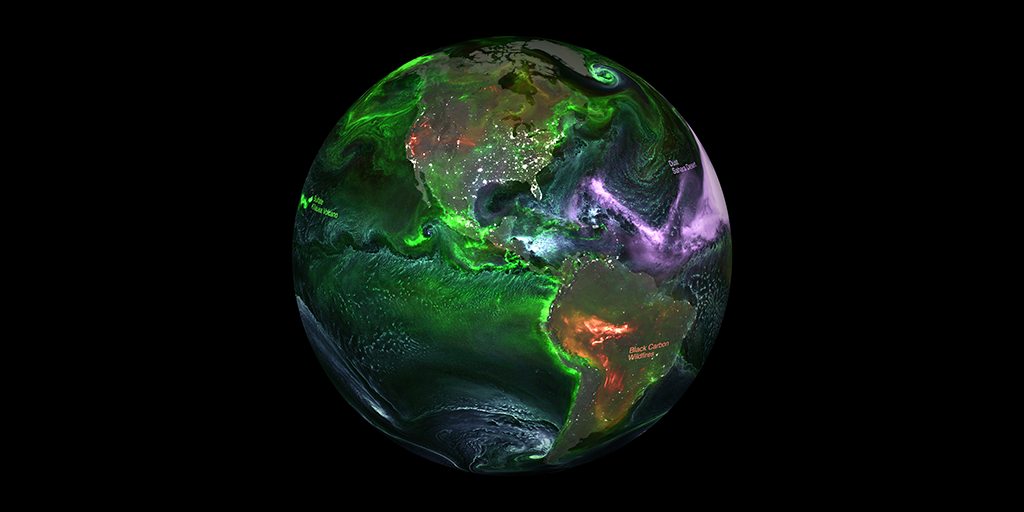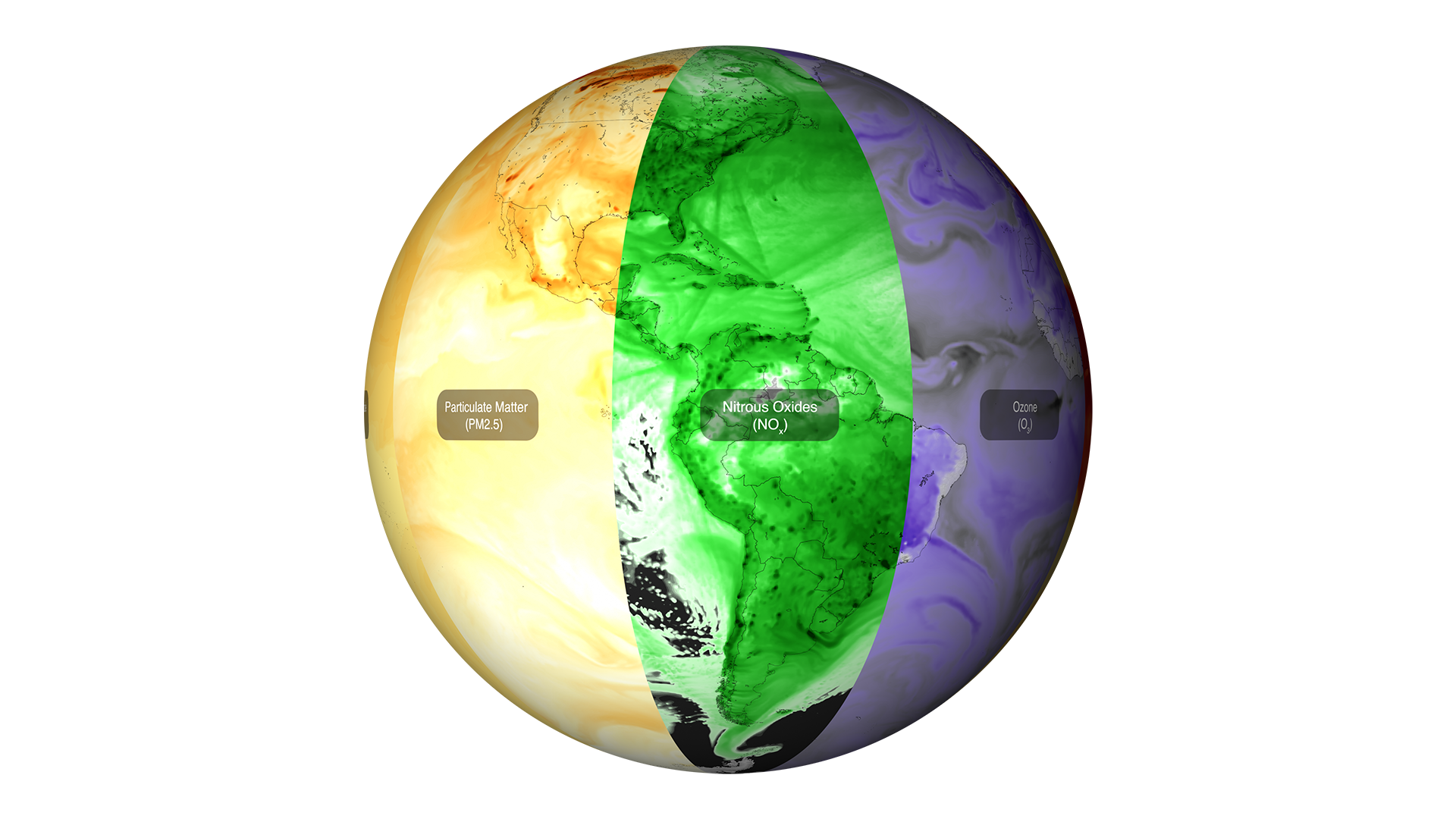Science On A Sphere: Air Quality Model Runs
Science On A Sphere Content
NASA utilizes satellite instruments and models to monitor sources of air pollutants and their movement through the atmosphere. This visualization shows concentrations of air pollutants, such as Particulate Matter (PM2.5, fine particles smaller than 2.5 micrometers), Ozone (O3), Carbon Monoxide (CO), and Nitrogen Oxides (NOx) as they are tracked from NASA's Goddard Earth Observing System Composition Forecasting (GEOS-CF) system. This data is used around the world to develop new methods for improving local air quality predictions, to understand the impact of pollution on human health, and to improve the quality of NASA satellite datasets.
Predictions of air pollution are created using complex models that combine information about weather and the emissions, transformation, and transport of chemical species and particles. The Goddard Earth Observing System Composition Forecasting (GEOS-CF) system is a research model maintained by NASA’s Global Modeling and Assimilation Office to help scientists understand the causes and impact of air pollution. It is one of the highest resolution and most detailed models of its kind in the world, made possible through ongoing collaborations between NASA and university scientists. GEOS-CF tracks the concentrations of hundreds of gas phase chemical species and dozens of types of particles characterized by their composition and size. It is used by a wide variety of stakeholders around the world to develop new methods for improving local predictions, understanding the impact of pollution on human health, and improving the quality of NASA satellite datasets.
This webpage offers content in Equirectangural projection (2:1 Aspect ratio).
Air Quality Model Runs (Equirectangular Projection)
Visualization showcasing the transport of Carbon Monoxide (CO), Particulate Matter (PM 2.5), Ozone (O3) and Nitrous Oxides (NOx) during July-August 2024, which was an active fire season in Northern America. This visualization is provided in equirectangular projection.
Credits
NASA’s Global Modeling and Assimilation Office and NASA's Scientific Visualization Studio.
-
Visualizers
- Helen-Nicole Kostis (USRA)
- Joseph V. Ardizzone (NASA/GSFC)
-
Scientist
- Lesley Ott (NASA/GSFC)
-
Technical support
- Ella Kaplan (Global Science and Technology, Inc.)
- Laurence Schuler (ADNET Systems, Inc.)
- Ian Jones (ADNET Systems, Inc.)
Related papers
Keller, C. A., Knowland, K. E., Duncan, B. N., Liu, J., Anderson, D. C., Das, S., Lucchesi, R. A., Lundgren, E. W., Nicely, J. M., Nielsen, E., Ott, L. E., Saunders, E., Strode, S. A., Wales, P. A., Jacob. D. J., and Pawson, S. (2021). Description of the NASA GEOS composition forecast modeling system GEOS-CF v1.0. Journal of Advances in Modeling Earth Systems, 13, e2020MS002413. https://doi.org/10.1029/2020MS002413
Datasets used
-
GEOS-CF
ID: 1197Knowland, K.E., C.A. Keller, and R. Lucchesi, 2022: File Specification for GEOS-CF Products. GMAO Office Note No. 17 (Version 1.3), 54 pp, available from https://gmao.gsfc.nasa.gov/pubs/docs/Knowland1446.pdf
This dataset can be found at: https://gmao.gsfc.nasa.gov/weather_prediction/GEOS-CF/data_access/
See all pages that use this dataset
Note: While we identify the data sets used on this page, we do not store any further details, nor the data sets themselves on our site.
Release date
This page was originally published on Monday, May 5, 2025.
This page was last updated on Wednesday, June 18, 2025 at 5:15 PM EDT.

